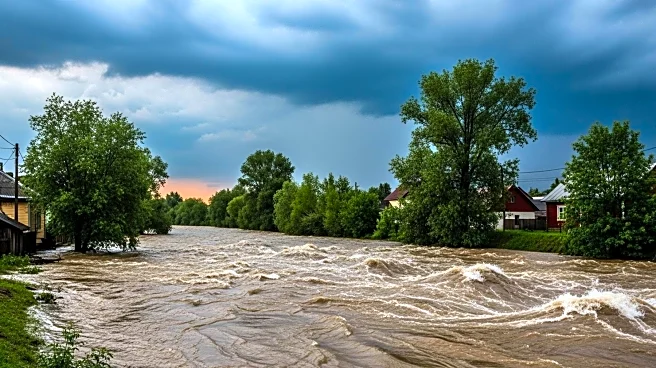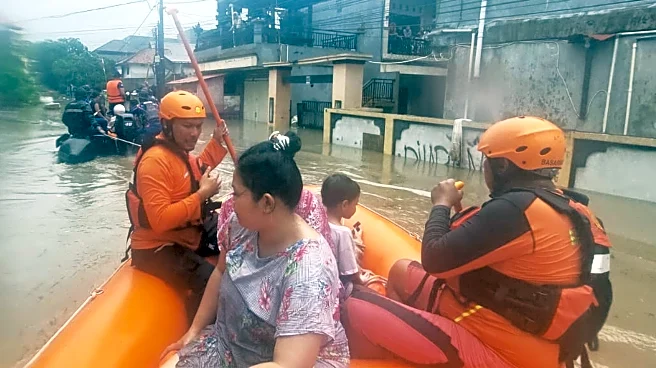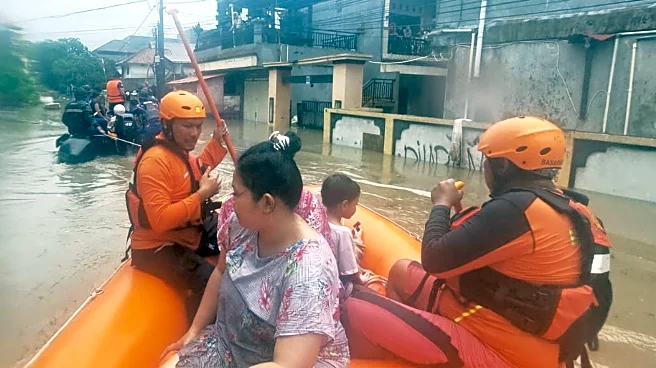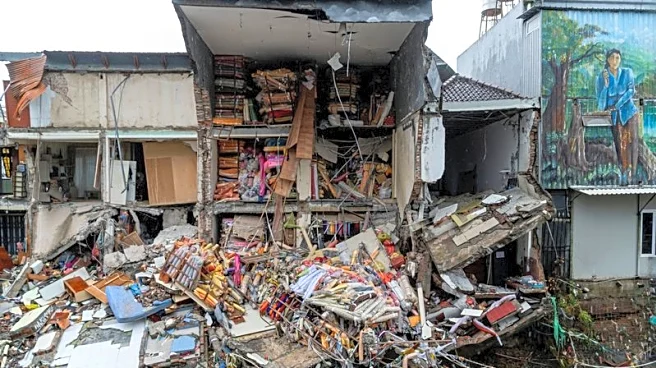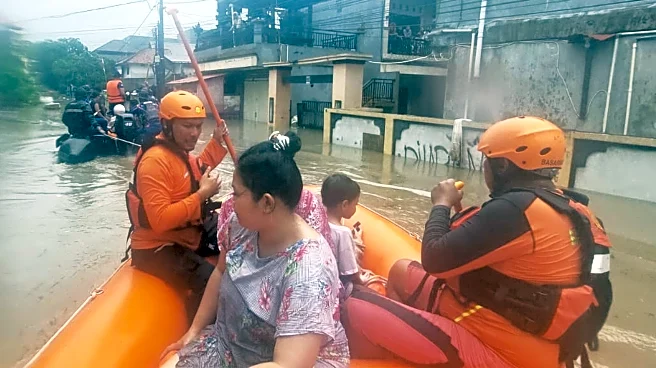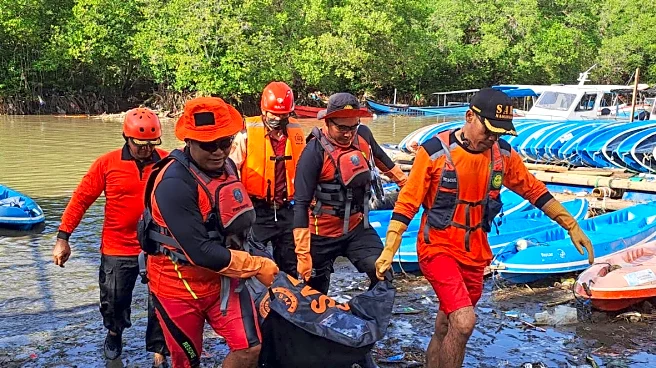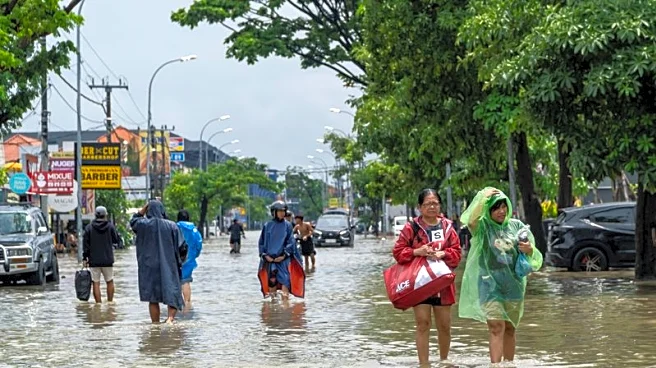What's Happening?
Rescuers in Indonesia are actively searching for survivors following devastating flash floods that struck Bali and East Nusa Tenggara province. Torrential rains beginning Monday led to flooding and landslides, resulting in at least 20 fatalities and leaving several people missing. The floods have caused significant damage, submerging neighborhoods and disrupting infrastructure, including electricity and telecommunications. Rescue operations are focused on finding missing individuals, including two toddlers, amidst challenging conditions exacerbated by rugged terrain and severe weather.
Why It's Important?
The floods in Bali highlight the vulnerability of the region to natural disasters, particularly during the rainy season. The impact on infrastructure and local communities is profound, with hundreds displaced and essential services disrupted. This event underscores the need for improved disaster preparedness and infrastructure resilience in Indonesia. The tourism industry, a vital part of Bali's economy, faces challenges as popular areas are affected, potentially impacting revenue and livelihoods. The situation calls for coordinated efforts to provide relief and rebuild affected areas.
What's Next?
As waters recede, authorities are beginning cleanup operations, restoring electricity, and clearing debris. The focus remains on locating missing persons and providing aid to displaced residents. Long-term recovery efforts will involve rebuilding infrastructure and addressing waste management issues that exacerbated the flooding. The Indonesian government may need to reassess its disaster response strategies and invest in sustainable infrastructure to mitigate future risks. International aid and support could play a role in the recovery process.
Beyond the Headlines
The floods in Bali raise questions about the impact of climate change on weather patterns and the frequency of such disasters. The event may prompt discussions on environmental policies and the need for sustainable urban planning. Additionally, the cultural and social implications for affected communities, including the loss of homes and livelihoods, require attention. The resilience and adaptability of local populations in the face of adversity will be crucial in the recovery phase.


